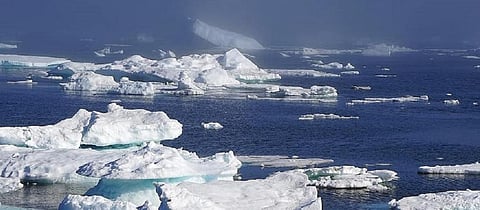

A recent study from the National Centre for Polar and Ocean Research (NCPOR) in Goa has pointed out that Arctic sea ice is melting at an alarming rate, especially during the boreal or northern hemisphere summer.
The study, published in the journal Heliyon, highlighted the increasing decline of the Arctic sea ice due to climate change. It reported that September sea ice declined to its lowest extent of 4.71 million square kilometeres in 2018, its lowest in the past four decades.
The study to measure the extent of Arctic sea ice loss was led by Avinash Kumar and his team of scientists comprising Juhi Yadav and Rahul Mohan from NCPOR.
“The minimum extent of seasonal sea ice for 2018 was recorded between September 19 and 23. Prior to September 19, 2018, sea ice extent had declined at a rate of nearly 14,000 square kilometres per day that was significantly faster than in most previous years,” Kumar observed.
The study also showed that the September of 2018 was the third warmest on record, with temperature differences of the air above the Arctic Ocean (~3.5°C) to be slightly higher than that of the Arctic land (~2.8°C).
The decline in sea ice can lead to accelerated global warming and climate changes. “The faster loss of sea-ice for the whole Arctic Ocean during September demonstrates that there are substantial variations in surface air temperature and there is a correspondence between the fluctuations in surface air temperature in the Arctic and global regions,” Kumar added.
The Arctic is warming twice as fast as the rest of the globe, a phenomenon known as arctic amplification. Arctic sea ice loss is attributed to several factors such as rising global temperatures. The study suggests that due to more open seas in winters, the growth of sea ice is delayed, leading to disproportionate loss of sea ice occurring during summer.
For the study, researchers obtained data of Arctic ice extent, thickness, and volume from 1979-2018 from globally-available satellite data and applied modelling techniques. They also studied its correlations with atmospheric and surface temperatures and sea pressure.
As a result, they were able to see how ice in the Arctic region has changed over the last four decades. It also helped them to predict the possible sea ice scenario in the coming years. The group is now planning to expand their work to study how sea ice melting and intrusion of warm ocean waters are related. (India Science Wire)